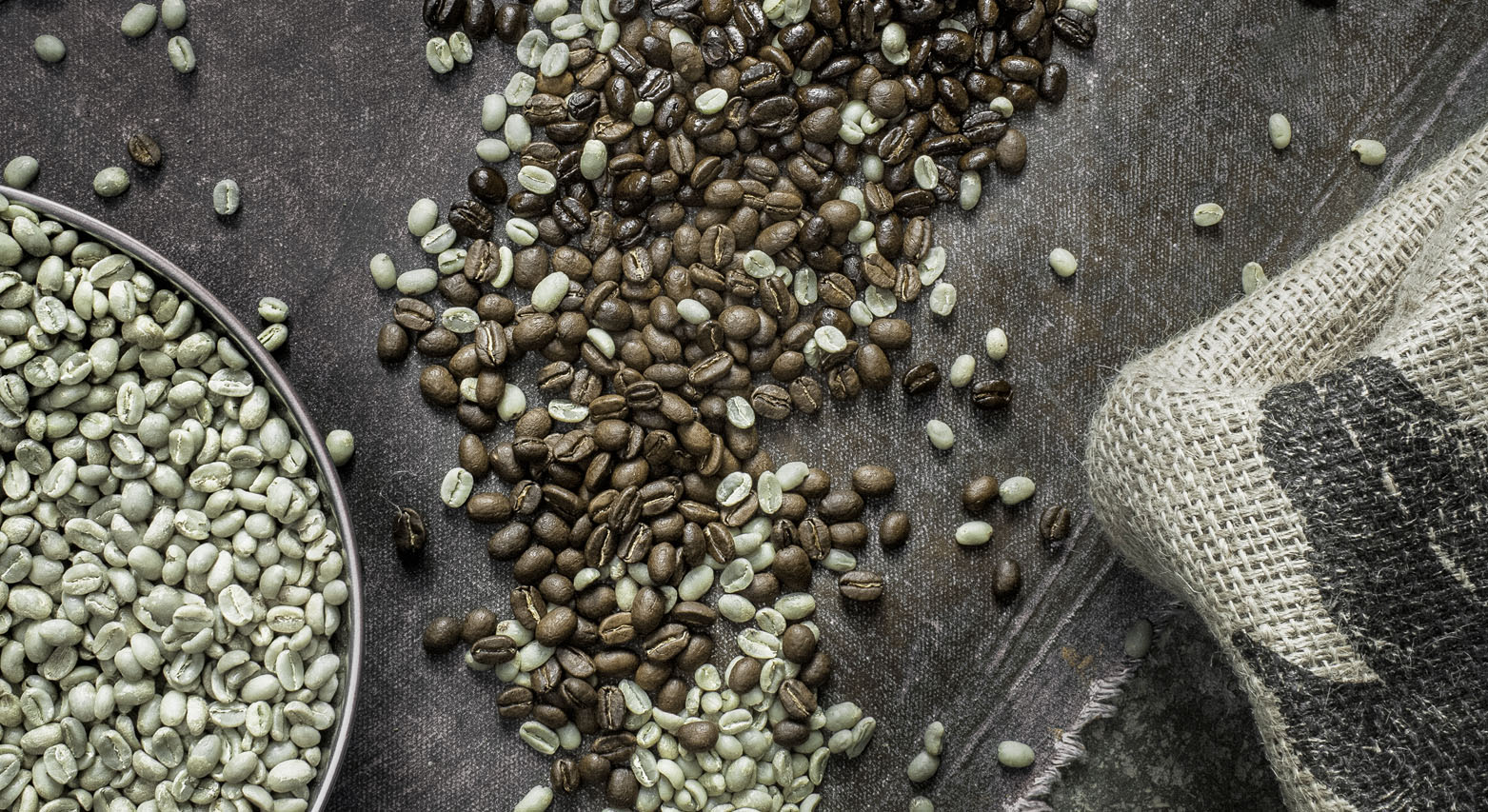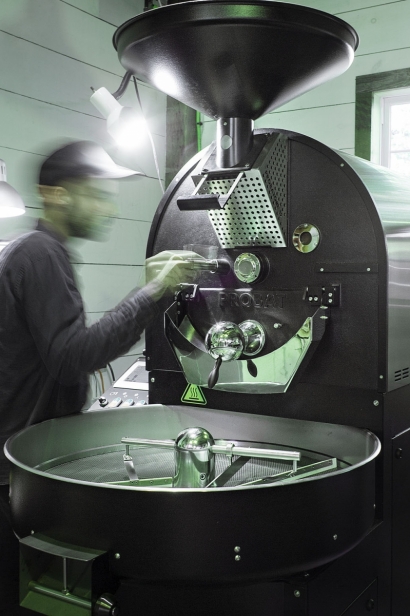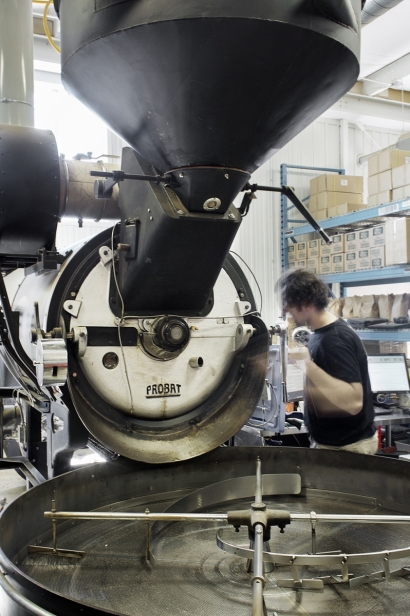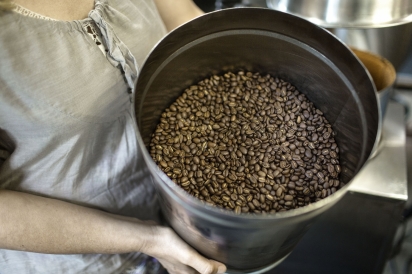Bean Around the Block
That first sip is like emerging from a fog — it opens your mind, providing clarity that wasn’t there before. Soft ripples of energy start to vibrate through you as you curl your hands around your favourite mug, bringing it to your lips. There is something there — a hint of strawberry, a taste of citrus. Maybe it is vanilla. It’s warm and inviting, enticing you to linger with it a little longer.
Such long, languid sips of a well-roasted and masterfully brewed cup of coffee are a far cry from the ubiquitous drive-through hit that sparks a good number of us awake each day. Enjoying coffee as an artisanal beverage and appreciating each stage of its production — from farming and harvesting to roasting and brewing — is a fairly recent shift in attitude. It has taken the dark, broody drink beyond a commodity into the realm of craft product, not unlike wine and beer before it.
Starting with the invention of vacuum-sealed packaging to prolong the freshness of the beans by Hills Bros. Coffee in San Francisco in 1900, followed by soluble, instant coffee and the Melitta filter, the first wave of coffee was marked by technological developments that caused the consumption of the beverage to grow exponentially. During Prohibition, coffee became the drink of choice and every soldier’s ration kit was supplied with Maxwell House during the Second World War. Coffee was quick, easy and relatively cheap, but not great tasting.
The second wave came in the form of grande lattes and Timbits — a growth of companies endeavouring to provide a better cup of joe. The first Tim Hortons opened in Hamilton, Ont., in 1964, focusing only on coffee and donuts. The first Starbucks opened in Seattle in 1971 and now, has close to 1400 shops in Canada and almost 50 in the Ottawa-Gatineau region alone. Coffee culture became a social phenomenon, but forsook the source of the bean, its cultivation and cultivator, in the name of bigger business.
In Ottawa, the third wave started with Bridgehead Coffee — the first company to bring fair trade coffee to Canada. Working with international organic, fair-trade and rainforest alliance certification boards, coffee production begins to be monitored to improve ethical, economic and environmental standards worldwide. The third wave developed a conscience — the notion that one could trace the path of that coffee back to its country of origin, its farmer and to be assured of its quality is key to this movement.
"When we started the company, coffee prices were at a 37-year low and small-scale farmers were leaving their farms," says Tracey Clark, president and CEO of Bridgehead Coffee. "It was a wake-up call for the specialty coffee movement, because the reliable supply of quality green coffee was at risk. The third wave in coffee is a quality and sustainability focused movement — where it intersects with fair trade are those smallholder groups who have formed co-operatives to process and promote their coffee. The mainstay of our sourcing is focused on price discovery with growers — we only purchase coffees which score 84 points or above. These coffees demand premiums, often returning many more times the return to farmers than conventional or even fair trade prices provide."
"I have always been fascinated with the ritual of coffee — its economics, its universality and the seemingly infinite variety of flavours. I remember tasting a natural-process Ethiopian Harrar for the first time and feeling like I had been punched in the nose by a blueberry, or the first time a shot of espresso was syrupy, salty, sweet, but also like inhaling dry cocoa — those times still blow me away."
Tracey Clark, Bridgehead Coffee
Motivated by a desire to connect the dots between quality and ethical consumerism, Equator Coffee Roasters opened in Almonte, Ont., in 1998 and made roasting locally a key part of its mandate from its inception. While Bridgehead began roasting its own coffee when it opened its 14,200-square-foot roastery, café and head office in Ottawa’s Little Italy in 2012.
Continuing to evolve, the third wave then shifted its focus towards the green bean itself. At the heart of this wave “is what happens when people find coffee fascinating and delicious. It has evolved a lot over the years — it started as more of an espresso focussed community with a huge emphasis on barista skill and knowledge. As espresso equipment has become much, much easier to use over the years, the community has shifted its interest toward drip preparation methods, which allowed us to look more closely at the unique taste of every coffee. Nowadays, the third wave is more associated with green coffee quality, sourcing relationships and the expression of these through drip coffee," says Ian Clark, Bridgehead’s director of coffee.
Bridgehead and Equator’s leadership in ethical sourcing and transforming the green bean locally has mirrored developments in larger markets such as San Francisco, Seattle, Melbourne, Vancouver and Toronto and laid the groundwork in our area, for the rapid expansion of the local roasting scene with now more than 20 roasters, of all shapes and sizes. In what some would argue is actually the fourth wave in the cultural growth of the craft coffee movement, sourcing moves to building direct relationships with growers and the art of roasting provides a wide range techniques and flavour profiles to choose from and offers tasting experiences akin to touring wine country.
Take Fluid Coffee Roasters — the micro-roaster run by Bill and Lorraine Kemp, who have been living off-grid in Clayton, Ont., for nearly a quarter of a century. A former electronic power engineer, Bill built the couple’s small farm to run entirely on the energy provided by solar thermal photovoltaic panels and a small wind turbine. Techno-hippies of the best kind, the Kemps decided to venture into coffee roasting when Neat, one of their favourite coffee shops and roaster, was forced to close its doors.
“Bill had been roasting his own green beans for years” explains Lorraine. “When we heard the café was going to close, we said to one another, why don’t we buy the roaster… and here we are.” She spent six months training with Neat’s roaster, Kim Berry, before Fluid Solar Coffee Roasters officially got off its feet in October 2015. The Kemps' machine, a Sivetz Fluid Bed, also runs completely on solar power. It is a small-capacity unit that, rather than using a traditional drum-and-barrel construction, behaves more like a popcorn maker. Forcing hot air up and around the beans, they, in turn, cascade in a fountain-like or fluid motion within the belly of the drum as they transform from green to deep, oily brown. This process results in a completely different profile in the finished product — that airiness can be found in the mouth-feel of their blends and single origins.
Despite its limited capacity, Fluid Coffee has, tucked away in the roasting cabin, floor-to-ceiling shelving units filled with precisely measured containers of more than 20 blends of regional and single-origin beans from places such as Guatemala, Kenya and Rwanda, which Fluid provides to almost as many cafés and shops around Ottawa. This rapid growth comes from a strong drive towards customer service and a desire to produce coffees that will satisfy the specific desires of their clients. “When I roast, I like to imagine the customer who will be drinking the coffee,” Lorraine says while the machine warms up. “We started with a wish-list of places where we’d like to have our coffee featured, places that matched us, smaller places that would also align well with our own philosophies.”
Not ones to shy away from darker roasts, decaf, nor varieties that are a bit more on the wild side, the Kemps' full-circle mission — based on a farm-gate purchasing program, where prices are directly negotiated with the farmer — is to be a completely sustainable operation and a minimal-waste facility. “Being able to work from home gives us a certain quality of life that we wouldn’t trade for a larger operation,” says Lorraine, gesturing to the rolling hills beyond.
Hidden at the top of a winding dirt road outside Wakefield, Qué., the blue barn that is the namesake of Blue Barn Coff ee Roasters rises idyllically from a swath of golden sunfl owers, amber autumn leaves and the low hanging light of the afternoon sun. And yet, this pastoral setting belies the technological precision and obsessive attention to detail of Luc Alary and his two other business partners, Kerri Flanagan and Patrizio Vena working within. Made up of this trio of millenials — a former foreign aid worker, a service and marketing professional and a post-doctoral student of turbulent flame dynamics — Blue Barn Coffee is about as far from rustic as you could get.
After waiting months to be the first in North America to acquire a P/2 series Probat roaster — a machine fully equipped with more than 1,000 touchscreen-controlled settings, probing thermocouples that track the temperature of the interior drum and digital monitoring systems, they’ve managed in the last six months to become one of the "it" roasters in the city. Not wanting to put a glass ceiling on the technology they could use in their production, they experiment quite a bit here, tracking data using refractometres and spectrophotometres. They cup daily, test different production methods and tend to roast lighter profiles, striving for a clean roast without the carbon-tasting bitterness.
Alary learned the roasting trade a decade ago while working in British Columbia. An ultra-runner in his spare time, his compulsivity towards perfection has not gone unnoticed among coffee buffs. Bright, crisp notes push up through the seven to eight varietals featured at any one time and Blue Barn can now be found in almost 20 cafés and retail shops, including several in Montreal. “We’re always pushing to be better,” he says. “Sometimes I just keep the bad roasts around to remind me of how far we have come.”
Twenty-somethings Francis Bueckert of Cloud Forest and Andrew Bassett of Little Victories operate conventional Probat roasters in rental spaces located in Hull. Youthful yet traditional, Bueckert came to coffee in a back-ended way. While training in international development at Trent University, he was given the opportunity to intern at a coffee farm in Intag, a remote area of Ecuador, northwest of the capital, Quito. Inspired by the community’s ability to hold off foreign mining efforts in the area and armed with a knowledge of alternative development models, he decided, upon returning to Ottawa, to begin importing coffee from the ultra-biodiverse region as a way of helping them succeed. Apprenticing under several regional roasters — including Happy Goat Coffee Co. and Bluebird Coffee — Bueckert now sells his medium and dark roast at music festivals, craft fairs and by direct subscription, delivered by bike. His enthusiasm has translated into a well-balanced cup that continues to develop along with this passion for his relationship with his suppliers.
Bassett, meanwhile, brings Australian barista training to his burgeoning company. Partnering with roaster Jeremie Thompson, both of whom started their careers with Equator Coffee Roasters in Almonte, the duo has been growing the Little Victories brand steadily, with a focus towards delicate and surprising fl avours — sparkling lemonade and honey in their Kenyan, or apricot and caramel in their Guatemalan — and working directly with local cafés to up the ante on the quality of coffee in the city.
Stylized and suave, Little Victories epitomizes the third wave’s approach to roasting — passionate and uncompromising in their desire to bring the best possible drinking experience to their customer. “I thrive off of learning new things,” says Bassett.
“And I want to bring that enthusiasm to Ottawa and to the coffee scene here. I want people to get energized — yes, buzzed — about what is going on here now. To try new things, find what they like and then try something else new, because now they can.”
Bluebarn Coffee Roasters
Wakefield, Que.
bluebarncoffee.com, 819.282.8286
Bridgehead Coffee Roastery
130 Anderson St., Ottawa, Ont.
bridgehead.ca, 613.233.1221
Cloud Forest
190 Glebe Ave., Ottawa, Ont.
intagcoffee.com, 613.700.9748
Equator Coffee Roasters
451 Ottawa St., Almonte, Ont.
equator.ca, 613.256.5960
Fluid Solar Roasted Coffee
202 Floating Bridge Rd., Clayton, Ont.
fluidcoffee.ca, 613.315.6432
Little Victories
1111A Wellington St., W. (café inside Cyclelogik)
lvcoffee.ca, 613.627.2770
Coffee Roasting 101
Somewhere between alchemy and a fine-tuned science, the roasting process has a number of phases — all of which can drastically affect the final product. One roast generally takes between 12 to 15 minutes and includes a host of chemical reactions that cause the beans to warm, swell in size, decrease in weight and transform from a dense green kernel into the oily and fragrant product we recognize as coffee.
Stage 1 – Drying
Green, raw coffee is about 7 to 11 per cent water. Inside the drum of the roaster, this water content begins to evaporate as the beans are heated. If the beans do not dry fully here, they will not roast evenly, resulting in inconsistent flavour. Temperature is carefully monitored because changing how quickly the roast progresses will change the final flavour of the coffee.
Stage 2 – Yellowing
The water has been drawn out of the beans and aromas of basmati rice or a breadiness can be detected. The beans begin to expand in size and their papery skins, or chaff, begin to flake off and are filtered away. The sugars also begin to react with the heat — some begin to caramelize, and, in fact, become less sweet. Others begin to react with the proteins in the coffee in what is known as Maillard or “browning” reactions.
Stage 3 – First Crack
The bean begins to brown quickly, while carbon dioxide and water vapour build inside the bean. Once this pressure becomes too great, the bean breaks open, making an audible cracking or popping sound as it doubles in size. From here, the familiar coffee flavours begin to develop. Most of the sugars have been used by the various chemical reactions, resulting in the myriad of aromatic compounds (over 800 have been detected) that give the coffee its specific taste. The roaster can choose to end the roast any point after the first crack.
Stage 4 – Roast Development
The length of time the beans remain in the roaster is determined by a pre-roast sample — a batch that has been roasted, tested and brewed on a smaller scale. The roaster is able to control the balance of acidity and bitterness in the end product as the acids decrease while the bitterness will increase the longer the beans are heated. Here, the subtitles of the bean — its terroir and distinct characteristics — can be drawn out.
Stage 5 – Second Crack
Some roasters will not take the coffee this far — a point at which the beans crack again. Here, the oils are driven to the surface of the bean, much of the acid has been lost and a deeper profile with a higher body and bitterness is achieved.
Stage 6 – Cooling
The beans are released from the roaster into a cooling tray that rapidly draws air around them to reduce their temperature and prevent them from cooking further. Generally, the beans are left to rest for two days before they are ready to grind and brew. Freshly roasted coffee should be used within two weeks of its roast date.








